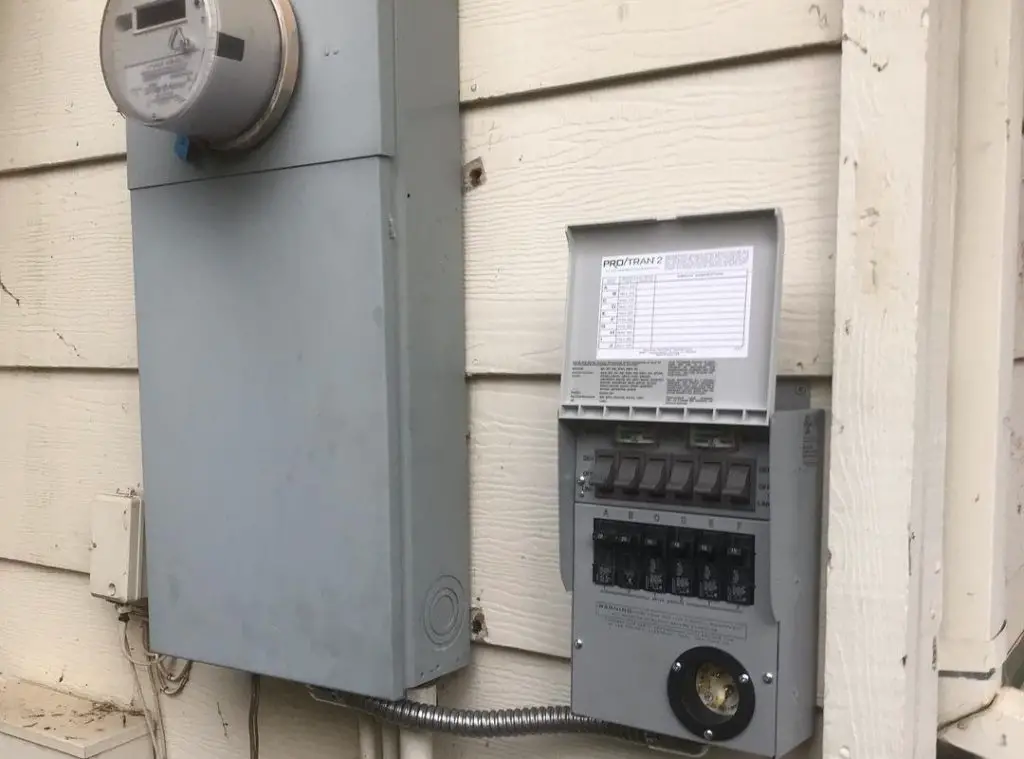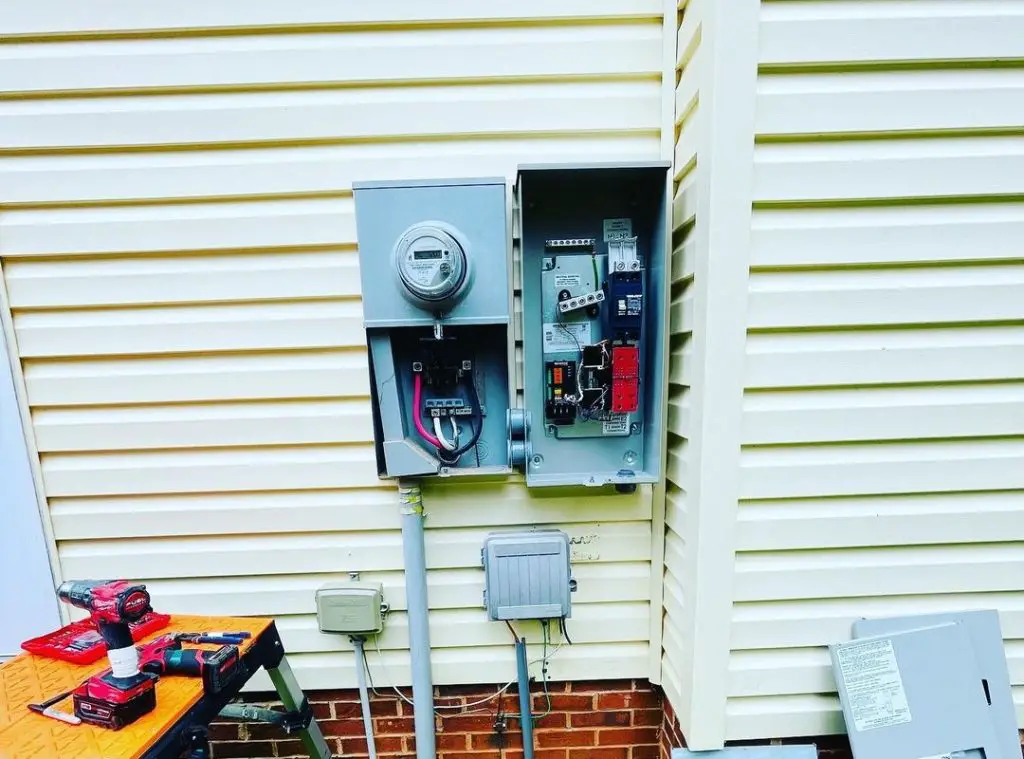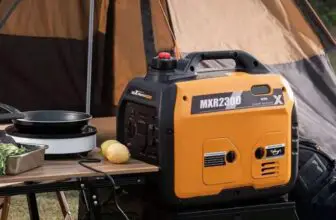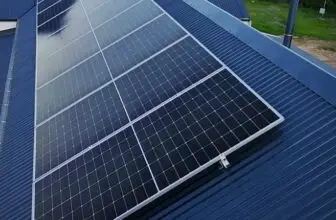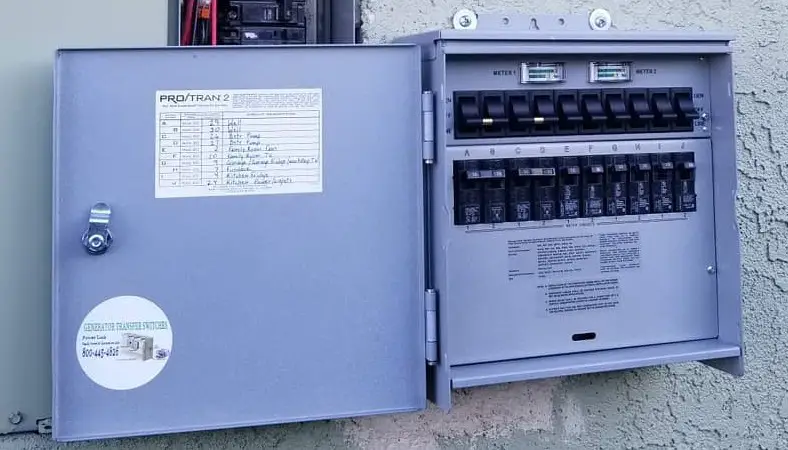
A transfer switch is a device used to safely connect a generator’s electrical panel to a home’s electrical panel. The switch prevents back feeding, which can occur when power from the generator is sent back through the utility lines.
Back feeding can damage utility lines and equipment and can also be dangerous for utility workers. This article will discuss the main types of generator transfer switches.
For What Purposes Do We Need a Generator Transfer Switch?
Contents
A transfer switch is a device used to switch between two power sources safely. This can be useful in several situations, such as switching between a generator and the primary power grid. To do this safely and in a controlled manner, use the generator switch.
These generators can be used in three scenarios:
- When switching between mains and generator.
- If you need to switch between different generators.
- When switching between other grids.
Precautions in Use of a Generator Transfer Switch
If you are considering installing a generator transfer switch in your home, there are a few things to keep in mind. First, consult a professional to ensure that the switch is installed correctly and that your generator is compatible with the controller. Additionally, read the instructions carefully and follow all safety precautions.
There are a few things to remember when using a generator with a transfer switch. First, always follow the manufacturer’s instructions. Also, disconnect all appliances and electronics before starting the generator. When connecting the generator to the transfer switch, use the proper size and type of cable. Finally, test the switch and generator regularly to ensure they are working correctly.
How did a Generator Transfer Switch work?
A generator transfer switch is a device that is installed between a generator and a home’s electrical panel. The switch is used to safely connect the generator to the home’s circuits and prevent back feeding, which can be dangerous.
When the power goes out, the generator transfer switch will automatically switch the energy from the utility to the generator. The button is typically installed by an electrician and can be placed inside or outside the home.
The switch prevents back feeding, damaging the generator, or injuring utility workers. A generator transfer switch is installed between the main breaker panel and the generator.
The switch has three positions:
- Off;
- Generator;
- Utility.
When the switch is off, the generator is not connected to the home’s electrical system.
In the generator position, the generator is connected to the home’s electrical system and provides power to the house.
In the utility position, the generator is disconnected from the home’s electrical system, and the utility company provides power to the home.
Pros and Cons of a Generator Transfer Switch
In many ways, a generator transfer switch is the best of both worlds. It allows you to have the power and flexibility of a generator without the hassle of manually switching it on in the event of a power outage. However, there are some potential downsides to consider as well.
Pros
One of the biggest pros of a generator power transfer switch is that it can save you a lot of time and hassle. If you have a generator, you know that you have to manually switch it on in the event of a power outage.
This can be time-consuming and difficult, especially if you’re unfamiliar with the generator. With a generator transfer switch, you can simply flip a button, and the generator will automatically turn on.
Another big pro is that a generator transfer switch can provide great peace of mind. If you live in an area that is prone to power outages, you know that having a generator can be a lifesaver.
However, if you don’t have a generator transfer switch, you may worry about whether or not the generator will be turned on in the event of an outage. With a generator transfer switch, you can rest assured that the generator will be turned on and will be able to provide you with power when you need it most.
Сons
There are some potential cons to consider as well, however. One of the biggest is the cost. Generator transfer switches can be expensive, especially if you need one that is rated for a higher-wattage generator. If you’re on a budget, you may want to consider other options.
Another potential con is that a generator transfer switch can be challenging to install. If you’re unfamiliar with electrical work, it’s best to hire a professional to help you with the installation. Otherwise, you may end up doing more harm than good.
Overall, a generator transfer switch can be a great addition to your home if you live in an area that is prone to power.
How Does a Generator Transfer Switch Work?
Principle of operation
ATS for a generator consists of three interrelated main blocks:
- Family of contractors that switch input and load circuits;
- Logic and indication devices;
- Relay switch blocks for generator control.
To increase the reliability of the backup power system, ATS devices can be equipped with additional blocks. For example, the inclusion of inverters into the circuit allows leveling voltage dips, eliminating time delays and making the output current of higher quality.
Switching on the reserve line is provided by the contact group. A phase control relay monitors the presence of the input voltage.
Let’s consider the principle of operation of the backup power supply system in the example of a simplified scheme. In normal mode, the contactor unit directs the power to the consumer lines when the power is supplied from the mains. The inverter converts the direct current from the battery into an alternating current of 110 V.
The input voltage is signaled to the logic and display unit. In nominal mode, the whole system is in a steady state. When an accident occurs in the mains (voltage drops below the set level), the phase control relay solenoid saturation becomes insufficient to keep the contacts in the working (normally closed) state. The contacts disconnect and disconnect the load from the power line.
Suppose the system is equipped with an inverter. In that case, it switches to alternating current generation mode, 110 V. Thus, consumers receive a stable voltage even in the complete absence of current in the commercial network.
If the parameters of the power lines are not restored within a specified period, the controller gives a signal to start the generator. When a stable voltage is received from the alternator, the contactors switch to the standby line.
Frequently Asked Questions
Here are the questions that are most frequently asked about a generator transfer switch.
How do you use a transfer switch for a generator?
A generator transfer kit connects a generator to a home’s electrical circuits. The switch prevents the generator from back-feeding into the utility lines.
Do I need an electrician to install a transfer switch?
It all depends on your level of knowledge and experience. We recommend that you enlist the help of an electrician.
Why does a generator need a transfer switch?
A generator needs a transfer switch because it is the only way to connect a generator to a home’s electrical circuits safely. A generator transfer switch prevents back feeding, damaging the generator and injuring utility workers.
Conclusion
The generator transfer switch is an important safety device used when operating a generator. The switch prevents back feeding, damaging the generator, or injuring utility workers.
Generator transfer switches are an essential safety device that every home with a generator should have. They are relatively easy to install and use and can give you peace of mind knowing that your generator is being used safely.

